For years I have faithfully extracted the large, boxed, artificial, Christmas tree from the crowded storage room and dragged it downstairs to our family room. Over the next several hours I would meticulously place tiny lights, pearl garland, and treasured ornaments on the tree. However, this year for some reason, I was not inclined in the least to do the same thing. Rather than sit down and analyze the reason for that, I decided to get a live tree this holiday, then enjoy planting our first live Christmas tree to enjoy for years to come.
Breaking With Holiday Tradition
The live Christmas tree was a hit with the family. We went a bit rustic and decorated the fireplace hearth with a couple of old shutters taken off the house a few years back and added some of our more natural Christmas decorations that we have used year after year. We even found the perfect tin box into which the large tree root ball and container would fit.
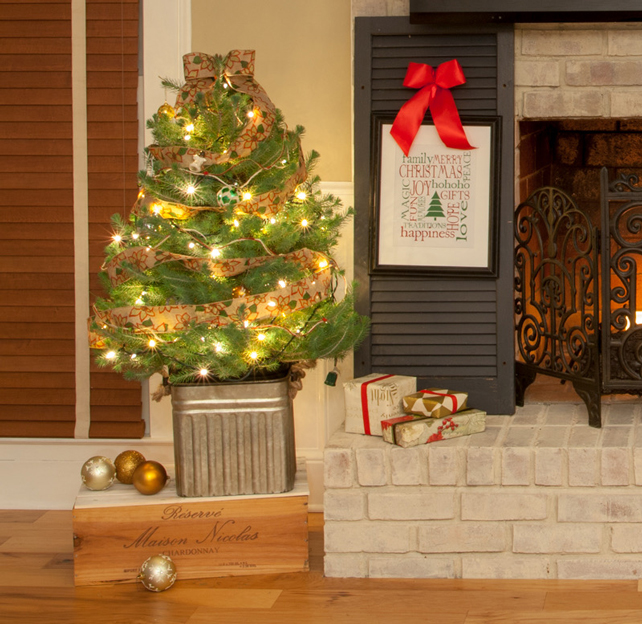
The Holidays are Over – Time to Plant Our Tree
We kept the tree in the house for a couple of weeks before moving it to the garage. After a few days in the garage we moved it to the screen porch to adjust to even cooler temperatures. I had read that this variety of tree likes well-drained somewhat dry soil. I watered the tree consistently being careful not to create the “wet feet” that it doesn’t like. Unfortunately, even with the watering the needles started to dry out and turn yellow. I moved it outside completely as the weather forecast was calling for rain. I thought perhaps getting a good all over soak would be what it needed. It got quite a bit of rain on it over the next few days but the yellow, brittle needles made for a pretty sad looking tree.
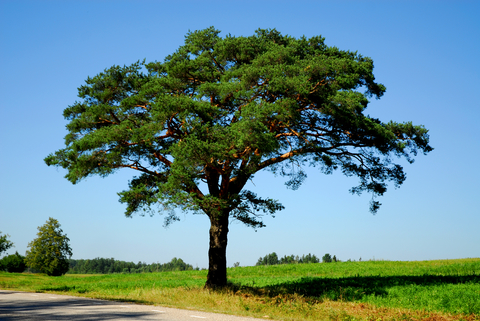
From Christmas Tree to Making Pesto in a Few Years
I scouted around our yard and found a sunny place for its permanent home. It will eventually add additional shade to the area that will allow me to extend my woodland garden.
This new tree about to be part of our back yard is originally from Southern Europe and is also called umbrella pine or parasol pine. The pine seeds, also called pignoli or pinoli, are commonly used in pesto which you’ve probably eaten at your favorite Italian restaurant. Time will tell if I ever get to eat pignoli from our back yard.
So, Where Does One Plant an Italian Stone Pine Tree?
Deciding where to plant the tree was not too difficult since we didn’t have many options based on the tree’s requirements. At maturity it could reach 35-60 feet tall with a canopy spread of over 35-45 feet. Granted, that’s going to take a while but we may as well plan ahead. We picked an open space that would allow the tree to reach maturity and receive the required 6 hours of sun daily.
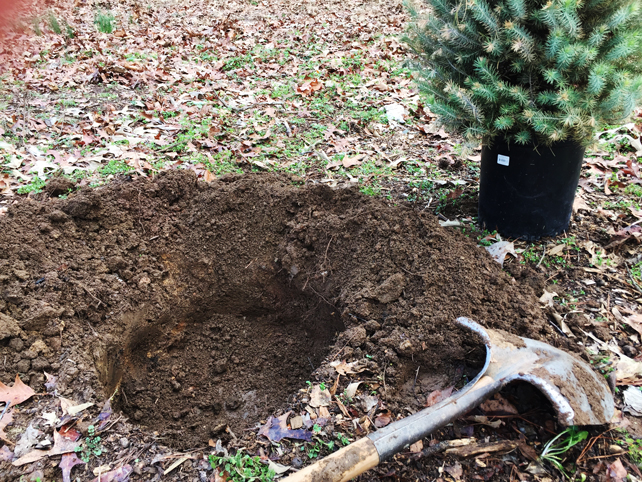
Preparing To Plant An Italian Stone Pine Tree
Dig the hole 2 ½ times the width of the tree’s container and as deep as the “crown” of the pine. The “crown” is defined as the top of the tree that consists of the leaves and branches. Remove the tree from container by laying the it on its side and pushing in all around the container to loosen it and then pull the container off the tree.

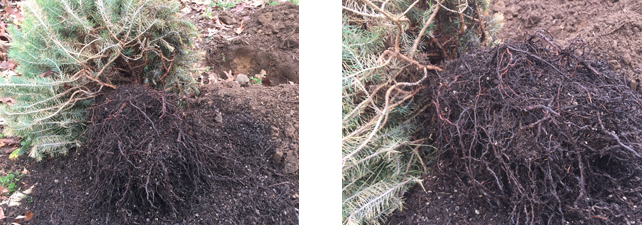
Separate the roots by gently pulling them away from the root ball. I added water to the root ball while loosening in order to minimize breaking the roots.
Planting An Italian Stone Pine Tree
Place the tree into the hole making sure the base of the trunk is just above soil level. Add soil under roots as needed to lift trunk. Make any adjustments so the tree is level and the trunk straight.

Add back half of the amended soil around tree roots then water well with 5 gallons of water and wait for it to drain. Once all the water has been absorbed, finish backfilling the hole with the remaining soil. Create a small ridge around the top of the root ball to prevent the water from running off. Finally, I applied the recommended amount of fertilizer for acid-loving plants thinking it probably needs all the help it can get. I watered well with another 5-10 gallons of water and topped it all off with 2 inches of mulch around the base of the tree making sure to keep it clear of the trunk.
Now, It’s A Waiting Game
I’m really hoping our Italian Stone Pine will live. It was in pretty bad shape when I discovered how root bound it was. I’m still hopeful that there was enough life left in it that now that the roots can receive water and fertilizer it will live for a very long time.
Will let you know what happens! In the meantime, if anyone has had experience planting their Christmas tree and has some tips, I’d love to hear them!
Updated Post: June 5, 2018
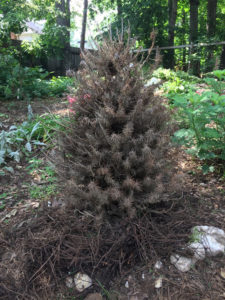
I promised to let you know how things are going with the Italian Stone Pine Tree. Well, we won’t be getting any pine nuts from this tree, now or in the future. It has been declared dead!
In spite of the articles I read stating that it is hardy within USDA plant zones 7 and 8, it certainly was not true in our case. The interesting part of this story is that the nursery where I bought it was not surprised at all that it did not survive! Since there had been no freezing temperatures that we’d expect would kill it, the conclusion was it didn’t like the humid climate here in the South and much prefers the dry, breezy, climate of the Mediterranean. That actually sounds better to me too.
So, another lesson learned. We enjoyed the tree for the holidays and had fun learning about the tree that produces those amazing little, and expensive, pine nuts. Fortunately the nursery has an “if it dies, we’ll replace it policy,” so I plan to use my credit in the fall to buy a tree that will thrive in our southern garden.
Leave a Reply